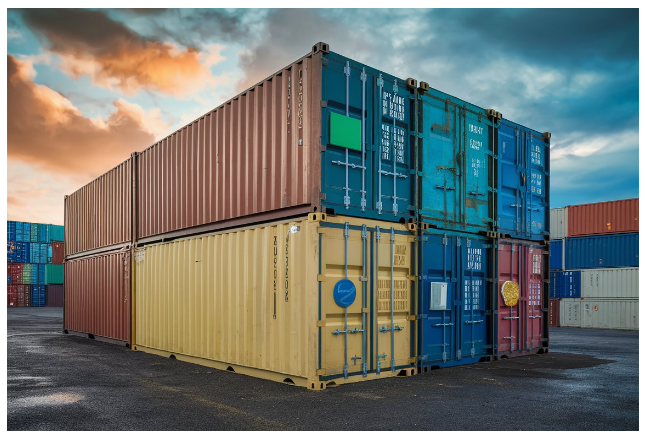Why Prioritizing an Emergency Fund in 2024 Is Essential for Financial Security

Introduction
In the whirlwind of life’s uncertainties, one thing remains constant: the unforeseen nature of emergencies. Whether it’s a sudden job loss, unexpected medical expenses, or a home repair crisis, having a robust financial safety net can be the difference between weathering the storm and facing a financial catastrophe. As we venture into 2024, the need to prioritize an emergency fund takes center stage in securing our financial stability.
An emergency fund serves as a cushion against life’s curveballs. It provides a sense of security and peace of mind, allowing individuals and families to navigate unforeseen circumstances without falling into debt or financial turmoil. While the exact amount in an emergency fund varies based on personal circumstances, financial experts often recommend stashing away at least three to six months’ worth of living expenses.
The Importance of Prioritizing in 2024
Economic Uncertainty:
“The global and national economic conditions can be unpredictable. Factors such as inflation, geopolitical events, and market fluctuations can impact personal finances. An emergency fund acts as a buffer, allowing individuals and families to navigate financial challenges without relying on credit cards or loans.” – Sumeet Johar Lal, founder of Yogic Experience
Job Market Volatility:
“I’ve come to realize that changes in technology can significantly impact employment prospects, causing shifts in the job market. I understand that industry swings can lead to fluctuations in job opportunities. As we approach 2024, it becomes imperative to acknowledge that job security is not a given and that having an emergency fund will stabilize your finances in the event of layoffs or career changes. An emergency fund provides a safety net, offering financial resilience in the face of unpredictable career transitions.” – Aarish Akrama, Head of Marketing at PcbAssemblyFrance
Rising Cost of Living:
“Inflationary pressures and escalating costs across various sectors, from housing to healthcare, emphasize the urgency of building a financial buffer. An emergency fund shields against the impact of these rising expenses, ensuring financial stability despite external economic challenges.” – Hamza Noor, Head of Content at Wooden Expert
Healthcare Expenses:
“Healthcare costs continue to soar, and unexpected medical emergencies can significantly strain finances. A well-funded emergency fund can alleviate the stress of medical bills, ensuring access to necessary treatments without compromising financial well-being.” – Carl Panepinto, Marketing Manager at Key Person Insurance
Unforeseen Circumstances:
“Natural disasters, unexpected home repairs, or car troubles are inevitable. Having a designated fund specifically for such situations prevents the need to rely on high-interest loans or credit cards, saving individuals from accumulating debt.” – Henry Allen, Digital Marketing Manager at Loyalty Lion
Strategies for Building an Emergency Fund
- Budgeting and Prioritization: Analyze monthly expenses and allocate a portion towards building the emergency fund. Treat it as a non-negotiable expense to ensure consistent contributions.
- Automated Savings: Set up automatic transfers from your paycheck to a separate savings account earmarked for emergencies. This habit ensures regular contributions without relying on conscious decision-making every month.
- Reducing Non-Essential Expenses: Evaluate discretionary spending and identify areas where cuts can be made. Redirect these savings into the emergency fund to accelerate its growth.
- Investing in High-Yield Savings Accounts: Explore savings accounts or investment vehicles that offer higher interest rates, allowing your emergency fund to grow faster while maintaining accessibility.
Overcoming Common Obstacles
Building an emergency fund might seem daunting, especially when faced with competing financial priorities. However, with a strategic approach and commitment, overcoming these obstacles becomes feasible:
- Low Income: Even with a modest income, allocating a small percentage towards the emergency fund can accumulate over time. Consistency is key.
- Existing Debt: While managing debt, allocate a portion of your budget towards both debt repayment and emergency fund contributions. Prioritize high-interest debt while still steadily growing the emergency fund.
- Urgent Expenses: Unexpected costs might arise, diverting funds from the emergency fund. Consider replenishing the fund once the immediate situation is resolved, emphasizing the fund’s importance in preventing future financial strain.
Conclusion
In an ever-changing economic landscape, prioritizing an emergency fund in 2024 stands as a cornerstone of financial preparedness. It acts as a shield against uncertainties, offering stability and security in the face of unexpected events. By establishing and consistently contributing to an emergency fund, individuals and families pave the way toward financial resilience and peace of mind in the year ahead.


